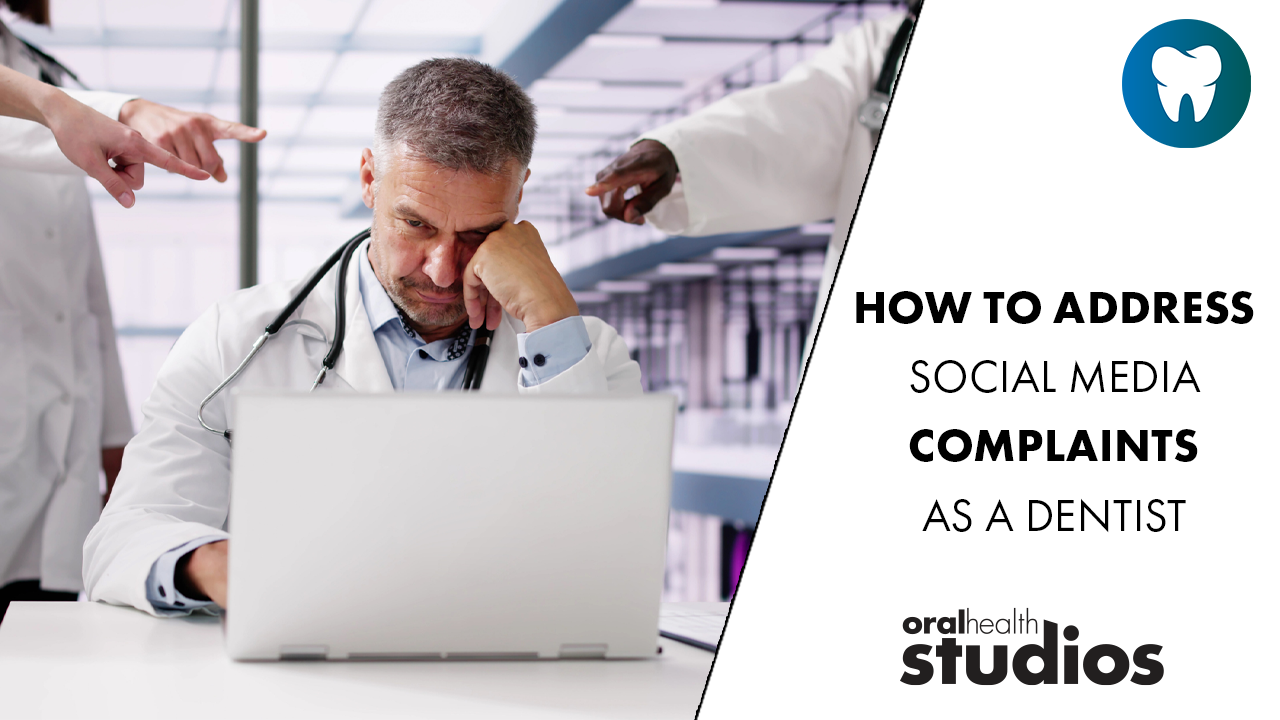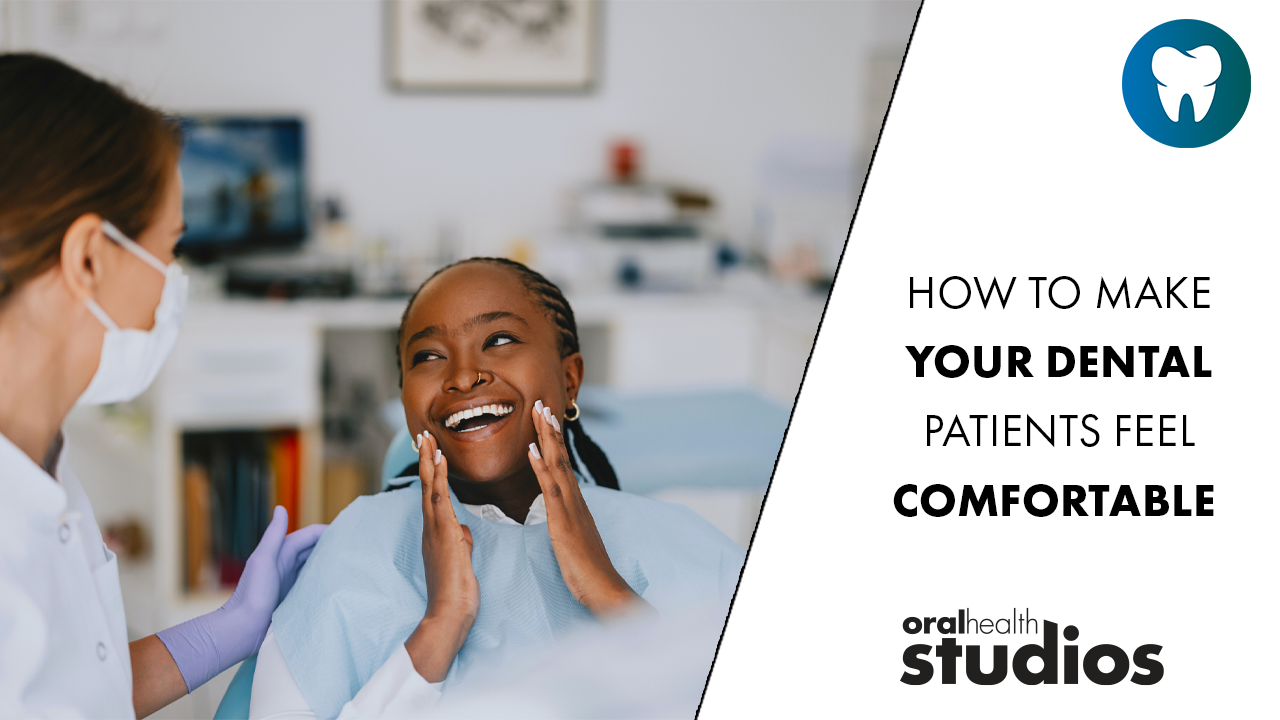The dental patients we once knew are a thing of the past – much like your old flip phone. Today’s patients are tech savvy, well educated and likely to have researched all of their symptoms and dental treatments prior to arriving in your chair. In today’s competitive landscape, dental care professionals need to inform and engage patients in a way we never could before. We need to be prepared to filter through the myths (and truths) they are reading online and educate them in a patient specific way to ensure we are providing them with comprehensive care options. Through the use of digital technology, we can provide the elevated and individualized care our patients expect and deserve.
Technology as a tool for engagement and education
By 2020, patient experience will surpass price as a key differentiator among service providers . It is important to think about the experience your patients are getting from the second they walk into your door. Incorporating technology into your practice can take your patient experience from average to exceptional.
Let’s reflect on how we have educated patients in the past when we found a cavity. We tirelessly tried to explain the cavity we discovered in a radiographic or clinical examination to a patient and watch their eyes glaze over. Now, think about how this process has since changed with the introduction of digital radiographs. The patient can now see their cavity when we zoom in or change density, allowing them to take ownership of their oral care and leave with a clear understanding of why treatment was needed.
Take that experience one step further with the intraoral camera. Now, the patient is truly accepting ownership of the broken-down picture of the tooth that came from their mouth. There is no denying the necessity of the treatment and the fees associated with improving the situation. We also have an opportunity to take this educational experience even further with digital scanning. We can scan a patient’s entire dentition and surrounding structures in 3-6 minutes, and then show them a 3D model of their teeth that reveals alignment, recession, wear, abfractions and occlusion in a way we never could before. The intraoral camera is a highly beneficial tool for promoting single tooth dentistry, while 3D digital scanning can promote comprehensive overall care to help our patients keep their teeth for a lifetime.
That said, it is no secret that many of our patients are driven by insurance coverage. However, if we are properly educating our patients on the reasons behind a recommended treatment, the coverage becomes less of an issue. Depending on what service we are providing, we can actually save our patients money over time by investing in their teeth. We need to tip the scale between value and cost, knowing that our goal is comprehensive oral care.
I encourage teams to use the Problem, Consequence, Solution Model (PCS) when educating their patients. If the patients in our chairs are not aware of a problem, they cannot fix it. If they aren’t aware the problem will lead to negative consequences, they are not motivated to fix the problem. If the consumer is not offered a solution to the problem, they cannot improve their oral health. Using Digital Radiographs, Intra oral Cameras and 3D digital scans will allow them to make educated decisions, feel involved in the process of improving their oral health and, above all else, give them the best opportunity for optimal oral health. Insurance coverage is available as a means to help them financially obtain improved oral health, but it will not be the key determining factor in proceeding with recommended solutions for problems noted in the oral cavity.
Technology for patient retention
Dentistry is a highly competitive industry, leaving patients with many options for oral care. Keeping up with new products and technology, although an initial investment of time and resources, can help you retain patients and grow your practice. Patients trust us with their oral health and do not desire to build relationships with other providers if they are already happy with you and the services you provide. However, if you are not providing them with the level of care they perceive to be the best, it’s a short walk to another dental practice to see if their needs will be met there. That said, patients won’t be tempted to leave your practice if you are meeting their needs through a high level of engagement and affording them the autonomy to make educated decisions on their oral health. Once a solid foundation of loyalty and trust has been built, even an advertised $500 less for a treatment down the street won’t tear them away.
A long-term investment
Incorporating new technologies into our practices requires sourcing products and determining the best fit for the needs of the practice and its patients. These products are certainly an investment, so it is important to do your due diligence when researching the pros and cons of each. Attending conventions is ideal, since each company will have their products on display for you to see and try out. In the same way that people choose one practice over another, word of mouth and other people’s experiences are important to consider. Consumer reports and reviews are also helpful. Lastly, the representatives of large manufacturers or distributors can help provide an unbiased opinion based on experiences with other practices. They may also help you negotiate the best price for the products you decide upon.
It is very important to remember: you get what you pay for. These products are investments and cost should not be the number one factor in the final decision. Ensure you invest in technology that will stand the test of time with a strong backing of support as the technology advances. Every operatory should have an intraoral camera, and each practice should have a digital scanner. You will begin looking at the scanner as a team member and might consider allocating a separate column for it on the schedule. You will surely be amazed at the contributions these technologies can provide your patients and practice when properly implemented.
It is easy to see how keeping up with technology can increase efficiency, accuracy and engagement within your practice. It will also enhance the patient experience, improve retention and increase referrals leading to a more successful practice. Don’t let the fear of change hold you back – dive into the digital revolution today!
About the Author
 Julie Gaffney, RDH, BSc, is a Manager of Dental Hygiene Programs at dentalcorp, specializing in the integration of Invisalign and iTero into their practices. A Registered Dental Hygienist with over 28 years of experience in dentistry, Julie brings a wealth of industry knowledge and experience in both the US and Canada. Throughout her extensive career, Julie has held a number of positions, including dental assistant, office manager, educator, orthodontic and pediatric dental hygienist, marketing specialist, author and international speaker. Julie is also one of the prestigious Hygiene Faculty Speakers for Align Technologies. She enjoys the outdoors and travelling with her son, husband and labrador retriever.
Julie Gaffney, RDH, BSc, is a Manager of Dental Hygiene Programs at dentalcorp, specializing in the integration of Invisalign and iTero into their practices. A Registered Dental Hygienist with over 28 years of experience in dentistry, Julie brings a wealth of industry knowledge and experience in both the US and Canada. Throughout her extensive career, Julie has held a number of positions, including dental assistant, office manager, educator, orthodontic and pediatric dental hygienist, marketing specialist, author and international speaker. Julie is also one of the prestigious Hygiene Faculty Speakers for Align Technologies. She enjoys the outdoors and travelling with her son, husband and labrador retriever.











